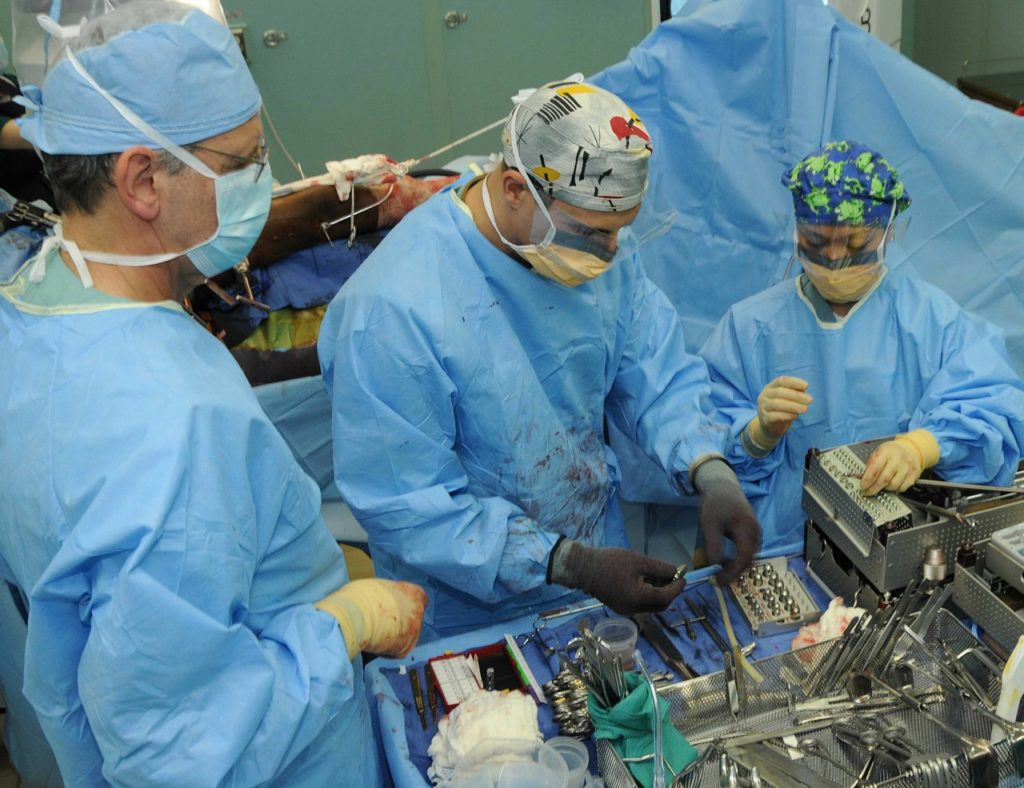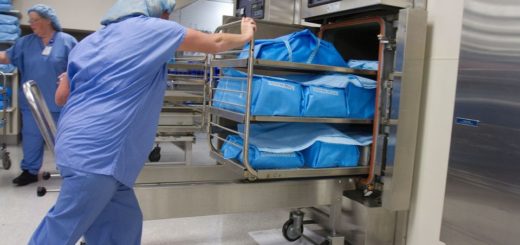The Role of CRCST in Ensuring Compliance with AAMI Guidelines for Sterile Processing
If you work in healthcare, you know that proper sterilization is critical to patient safety. Sterilization is the process of eliminating all microorganisms from medical equipment and supplies to prevent the spread of infection.
The Association for the Advancement of Medical Instrumentation (AAMI) has established guidelines for sterile processing to ensure that medical equipment is properly sterilized before use.
As a Certified Registered Central Service Technician (CRCST), you play a vital role in the sterile processing of medical equipment. Your job is to clean, disinfect, and sterilize medical equipment and supplies to ensure that they are safe for patient use.
You must follow AAMI guidelines to ensure that equipment is properly sterilized and that patients are not put at risk.
The Importance of AAMI Guidelines
Overview of AAMI Guidelines
When it comes to sterile processing, following guidelines and standards is crucial to ensure patient safety and prevent the spread of infections.
The Association for the Advancement of Medical Instrumentation (AAMI) is a non-profit organization that develops and publishes standards and guidelines for medical devices and sterile processing.
AAMI has developed several guidelines specifically for sterile processing, including the ANSI/AAMI ST79:2017 Comprehensive Guide to Steam Sterilization and Sterility Assurance in Health Care Facilities.
READ: AAMI Standards FAQs for Sterilization
Benefits of Following AAMI Guidelines
Following AAMI guidelines can provide numerous benefits for healthcare facilities and patients.
First and foremost, adherence to guidelines can help prevent the spread of infections and ensure patient safety. Proper sterilization of medical devices is essential to prevent the transmission of harmful microorganisms, such as bacteria and viruses.
By following AAMI guidelines, healthcare facilities can ensure that their sterilization processes are effective and reliable. In addition to improving patient safety, following AAMI guidelines can also help healthcare facilities improve efficiency and reduce costs.
By implementing standardized processes and procedures, healthcare facilities can streamline their sterilization processes and reduce the risk of errors. This can help reduce the need for reprocessing and minimize the risk of device damage, which can ultimately save time and money. Another benefit of following AAMI guidelines is that it can help healthcare facilities stay compliant with regulatory requirements.
Many regulatory bodies, such as the Joint Commission, require healthcare facilities to follow recognized standards and guidelines for sterile processing. By following AAMI guidelines, healthcare facilities can demonstrate their commitment to patient safety and compliance with regulatory requirements.
Overall, following AAMI guidelines is essential for ensuring patient safety, improving efficiency, and staying compliant with regulatory requirements. By implementing standardized processes and procedures, healthcare facilities can ensure that their sterilization processes are effective, reliable, and consistent.
The Role of the CRCST
As a Certified Registered Central Service Technician (CRCST), you play a critical role in ensuring that medical instruments and equipment are properly sterilized and safe for patient use. Your work is essential to maintaining the highest standards of patient care in medical facilities.
Job Responsibilities of the CRCST
Your job responsibilities as a CRCST include:
- Assembling, cleaning, disinfecting, and sterilizing medical instruments and equipment
- Inspecting and testing instruments and equipment to ensure proper functioning
- Preparing and distributing sterile supplies and equipment to different departments within the medical facility
- Managing inventory and ordering supplies as needed
- Following AAMI guidelines and other regulatory requirements to ensure compliance and safety
As a CRCST, you are responsible for maintaining a sterile environment and preventing the spread of infections in medical facilities. Your attention to detail and commitment to following guidelines and regulations are essential to ensuring patient safety and preventing adverse events.
Importance of CRCST Certification
Certification as a CRCST is important for several reasons:
- It demonstrates your knowledge and skills in sterile processing
- It provides a standard of competency for employers and colleagues
- It helps you stay up-to-date with the latest industry standards and guidelines
- It can lead to career advancement opportunities and higher salaries
By obtaining and maintaining your CRCST certification, you are demonstrating your commitment to patient safety and quality care. It is an important step in your career as a sterile processing technician and is highly valued by employers in the healthcare industry.

Best Practices for Sterile Processing
As a CRCST, it is crucial to follow the AAMI guidelines for sterile processing to ensure patient safety and prevent infections. Here are some best practices to follow:
Cleaning and Decontamination Procedures
Effective cleaning and decontamination are essential for preventing the spread of infections. You should follow the manufacturer’s instructions for cleaning and decontaminating medical devices. Make sure to use the appropriate cleaning agents and equipment for each device. Use mechanical cleaning methods, such as ultrasonic cleaning, whenever possible.
It is important to inspect the devices for visible soil and damage before cleaning. You should also conduct a visual inspection after cleaning to ensure that all soil has been removed. Use a microscope or magnifying glass to inspect hard-to-see areas.
Sterilization Techniques
There are various sterilization techniques available, such as steam sterilization, chemical sterilization, and low-temperature sterilization. You should choose the appropriate sterilization method based on the device’s material and intended use.
Make sure to follow the sterilizer manufacturer’s instructions for loading and operating the sterilizer. Use appropriate biological indicators and chemical indicators to monitor the sterilization process. Record all sterilization parameters, such as temperature, pressure, and exposure time, in a logbook.
Packaging and Storage Guidelines
Proper packaging and storage are critical for maintaining the sterility of medical devices. Use appropriate packaging materials, such as sterilization wrap or pouches, and follow the manufacturer’s instructions for packaging each device.
Label each package with the device name, sterilization date, and expiration date. Store the packages in a clean, dry, and well-ventilated area. Make sure to rotate the inventory to use the oldest packages first.
By following these best practices for sterile processing, you can help ensure that medical devices are safe for patient use. Remember to always follow the AAMI guidelines and manufacturer’s instructions for each device.
READ: Sterile Processing: Importance, Procedures, and Best Practices
Common Issues in Sterile Processing
Consequences of Non-Compliance with AAMI Guidelines
Non-compliance with AAMI guidelines can lead to serious consequences, including patient infections and even death. If medical equipment is not properly sterilized, it can spread infections from patient to patient. This can also lead to legal consequences for healthcare facilities and individuals responsible for sterile processing.
It is important to note that AAMI guidelines are not optional. They are industry standards that must be followed to ensure patient safety and prevent the spread of infections. Failing to comply with these guidelines can have devastating consequences.
Preventing Contamination and Infection
One of the most important aspects of sterile processing is preventing contamination and infection. This can be achieved by following AAMI guidelines and implementing best practices for sterile processing. Some common issues in sterile processing include:
- Improper cleaning of medical equipment
- Not using the correct sterilization method for the equipment
- Using expired or damaged sterilization equipment
- Not properly storing sterilized equipment
These issues can be prevented by implementing proper training and education for sterile processing technicians, ensuring that equipment is properly maintained and replaced when necessary, and regularly auditing sterile processing procedures to ensure compliance with AAMI guidelines.
By following AAMI guidelines and best practices for sterile processing, healthcare facilities can ensure the safety and well-being of their patients, while also protecting themselves from legal and financial consequences.



I would like to know which certification I need to earn more money I have been in the field for 15 years and graduated tech school but never took test